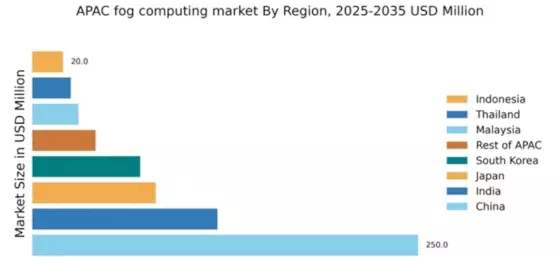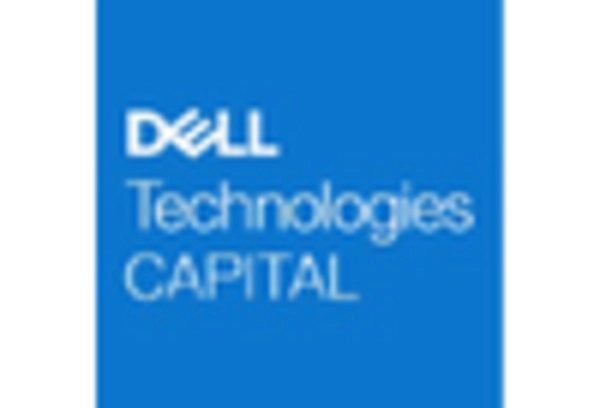China : Unmatched Growth and Innovation
China holds a commanding market share of 250.0, representing a significant portion of the APAC fog computing market. Key growth drivers include rapid urbanization, increased IoT adoption, and substantial government investments in smart city initiatives. Demand trends indicate a shift towards edge computing solutions, driven by the need for real-time data processing. Regulatory policies, such as the National New Infrastructure Plan, support technological advancements and infrastructure development, fostering a conducive environment for fog computing.
India : Emerging Market with High Potential
India's fog computing market is valued at 120.0, showcasing a robust growth trajectory. Key growth drivers include the increasing demand for low-latency applications and the rise of smart manufacturing. Government initiatives like Digital India and Make in India are pivotal in promoting technological adoption. The demand for fog computing solutions is particularly strong in sectors such as healthcare and agriculture, where real-time data processing is crucial.
Japan : Innovation at the Forefront
Japan's fog computing market is valued at 80.0, with a focus on innovation and advanced technology. Key growth drivers include the aging population, which necessitates smart healthcare solutions, and the push for automation in manufacturing. The government supports these initiatives through policies aimed at enhancing digital infrastructure. Demand for fog computing is particularly high in urban areas like Tokyo and Osaka, where smart city projects are underway.
South Korea : A Leader in Digital Transformation
South Korea's fog computing market is valued at 70.0, driven by the government's commitment to smart city development. Key growth drivers include the integration of AI and IoT technologies in urban planning. Regulatory frameworks support innovation, with initiatives like the Korean New Deal promoting digital infrastructure. Major cities such as Seoul and Busan are key markets, with significant investments from local players like Samsung and LG.
Malaysia : Emerging Market with Opportunities
Malaysia's fog computing market is valued at 30.0, reflecting a growing interest in edge computing solutions. Key growth drivers include the rise of smart manufacturing and government initiatives like Industry 4.0. Demand trends indicate a shift towards localized data processing, particularly in sectors such as logistics and healthcare. The government is actively promoting digital transformation through various policies and incentives.
Thailand : Investment in Digital Infrastructure
Thailand's fog computing market is valued at 25.0, with strategic investments in digital infrastructure. Key growth drivers include the increasing adoption of IoT devices and government initiatives aimed at enhancing connectivity. The demand for fog computing solutions is particularly strong in Bangkok, where smart city projects are being implemented. Local players are emerging, but international firms like Cisco and IBM maintain a significant presence.
Indonesia : Focus on Connectivity and Innovation
Indonesia's fog computing market is valued at 20.0, with a focus on improving connectivity and digital infrastructure. Key growth drivers include the rapid adoption of mobile technology and government initiatives aimed at enhancing internet access. Demand for fog computing is growing in urban areas like Jakarta, where smart city initiatives are being explored. The competitive landscape includes both local startups and established international players.
Rest of APAC : Varied Growth Across Sub-regions
The Rest of APAC market for fog computing is valued at 41.0, showcasing diverse opportunities across various countries. Key growth drivers include the increasing need for localized data processing and the rise of IoT applications. Regulatory support varies by country, influencing market dynamics. Demand trends indicate a growing interest in sectors such as agriculture and transportation, where fog computing can enhance operational efficiency.


















Leave a Comment